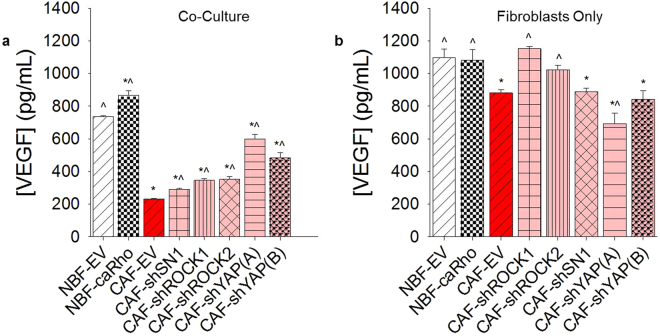Figure 4.
VEGF production and utilization is impacted by mechanotransduction inhibition. (a) VEGF produced during the vasculogenic ring assay demonstrates differences between EV controls and modified cells lines. *p < 0.05 vs. NBF-EV/EC; ^p < 0.05 vs. CAF-EV/EC. Increased levels of VEGF do not necessarily correspond to increased vascular growth, as demonstrated by NBF-EV/EC samples having significantly higher steady state levels of VEGF than CAF-EV/EC samples. (b) To determine how EC presence affected VEGF measurements in the ring assay, we measured VEGF production in fibroblast only cultures in the same concentration 3D fibrin gels. These results suggest that modified CAFs may produce more VEGF than CAF-EVs, but that the ECs in these cultures are less efficient at utilizing the molecule for the creation of vessels. Further, there is no difference in NBF-EV and NBF-caRho fibroblast only samples measurements of VEGF, while NBF-caRho/EC samples show more VEGF than NBF-EV/EC samples. This indicates that VEGF consumption alone cannot explain enhanced vessel growth in NBF-caRho/EC samples. *p < 0.05 versus NBF-EV; ^p < 0.05 vs. CAF-EV.

